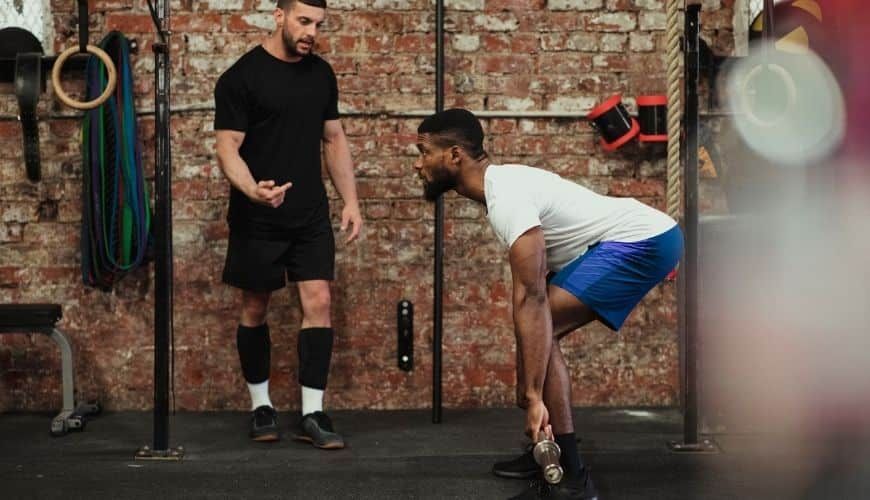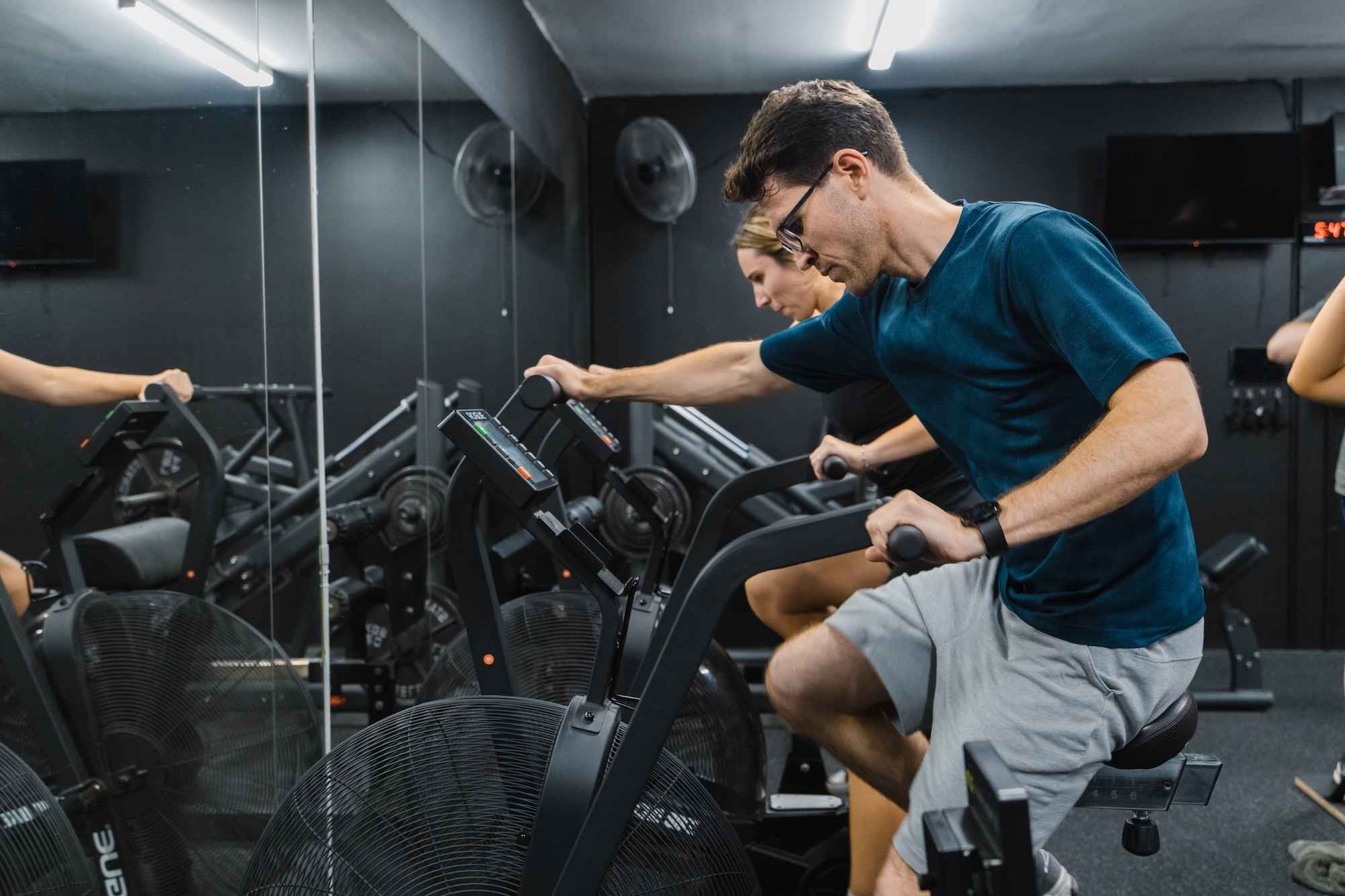Exercises You Need To Do to Train All Muscles and Build Strength
“When you train all movements, you train all muscles” - a valuable lesson from Athlete’s Authority, one of the best coaching facilities in the industry.
When you go to the gym, you’ll often see people isolating muscle groups in each session and their program looks a bit like this:
- Chest day
- Back day
- Arm day
- Leg day
Don’t get us wrong; these have their time and place, especially if you are a bodybuilder. But for the average Joe or Jane, it’s not the best bang for your buck when you don’t have hours to spend in the gym.
What are movement patterns?
Basic exercise movement patterns are patterns that closely mimic movements you do every day such as bending over to pick up your kid, picking up a box from the floor, or pushing yourself up off the floor. These movements form the foundation for good exercise programming (1) so you can train these patterns and become stronger and more efficient; to help slow down muscle atrophy (loss), maintain function and prevent injury.
- Knee dominant
- Hip dominant
- Horizontal push and pull
- Vertical push and pull
- Rotational stability
- Rotational power
Fun fact: After 30, on average, adults lose about 3-8% of muscle mass every 10 years (2). Imagine how much muscle loss would occur over 30 years? That’s why exercise and good programming are key to slowing or even reversing this natural process.
Knee dominant
Knee dominant movements require movement (flexion/extension) around the knee joint. This movement targets the quads as the primary muscle group.
Some examples of knee dominant exercises are:
- Squats (and single leg variations)
- Leg press (and single leg)
- Lunges
- Reverse nordic curls
- Leg extension
- Step ups
Hip dominant
Hip dominant movements require movement (flexion/extension) around the hip joint, with minimal movement at the knees. This movement targets the posterior chain - the hamstrings, the glutes and the erector spinae.
Some examples of hip dominant exercises are:
- Deadlifts (conventional, sumo, deficit, etc.)
- Hip thrusts
- Glute bridges
- Good mornings
- Frog pumps
- Romanian deadlifts
Horizontal push
Horizontal push movements involve moving a weight straight in front of you, away from your torso. It involves scapula protraction, shoulder flexion and shoulder horizontal adduction with elbow extension (i.e. pushing).
Some examples of horizontal push exercises are:
- Barbell press
- Incline bench press
- Dumbbell bench press
- Push ups
- Chest flys
- Wall throws
Vertical push
Vertical push movements move the weight vertically in relation to the torso and away from the torso (overhead). It usually involves scapula upward rotation, shoulder flexion, shoulder abduction and/or flexion and extension of the elbow (i.e. pushing).
Some examples of vertical push exercises are:
- Overhead press
- Push press
- Arnold press
- Z press
- Viking press
- Landmine press
Horizontal pull
Horizontal pull movements have the weight starting in front of you and moving towards the torso. The main movements are scapula retraction, shoulder extension and horizontal abduction with elbow flexion (i.e. pulling).
Some examples of horizontal pull exercises are:
- Bent over row
- Inverted row
- Face pulls
- Seated row
- Pendlay row
- Single arm landmine row
Vertical pull
Vertical pull movements move a weight vertically in relation to your torso. The main movements are scapula downward rotation, shoulder extension and shoulder horizontal abduction to create elbow flexion (i.e. pulling).
Some examples of vertical pull exercises are:
- Chin ups
- Pull ups
- Lat pulldown
- Upright row
Core Stability (anti-movements)
Anti-movements occur when your core muscles contract to stabilise your spine and pelvis to prevent movement, and maintain a neutral position while resisting force. It improves your ability to transfer energy between your upper and lower body by remaining stiff and stable, to produce more powerful and efficient actions.
Anti-rotation exercises train the hips and spine to resist rotation. These include bird dogs, pallof press, and GHD side holds.
Anti-extension exercises train the spine to resist “extending” backwards, or the back arching. These include dead bugs, planks, body saws, and ab rollouts.
Anti-lateral flexion exercises train the spine to resist bending to the side. These include side planks, suitcase carries, and single-arm waiters walk.
Anti-flexion exercises train the spine to resist folding forward. These include back extensions, squats, deadlifts and Sorenson holds.
So what does all of this mean?
It means you have yourself an exercise program. By including all the movement patterns above, you’ll be able to hit all muscle groups in your training. If you only have 1 day to train, an example program could be
- Knee dominant such as a barbell back squat
- Horizontal pull such as a seated row
- Hip dominant such as a barbell hip thrust
- Horizontal push such as a push up
- Vertical pull/push such as an overhead press
- Rotational stability such as a cable pallof press
If you have more than 1 day, split the movements out across the days. You may even hit the muscle groups more than once in a week!
If you need some guidance on where to start, contact us to get some help with your programming.
References
- Walker, Owen. “Basic Movement Patterns.” Science for Sport, 2016.
- Volpi, Elena, et al. “Muscle tissue changes with aging.” Current Opinion in Clinical Nutrition and Metabolic Care, vol. 7, no. 4, 2004, pp. 405-410.

